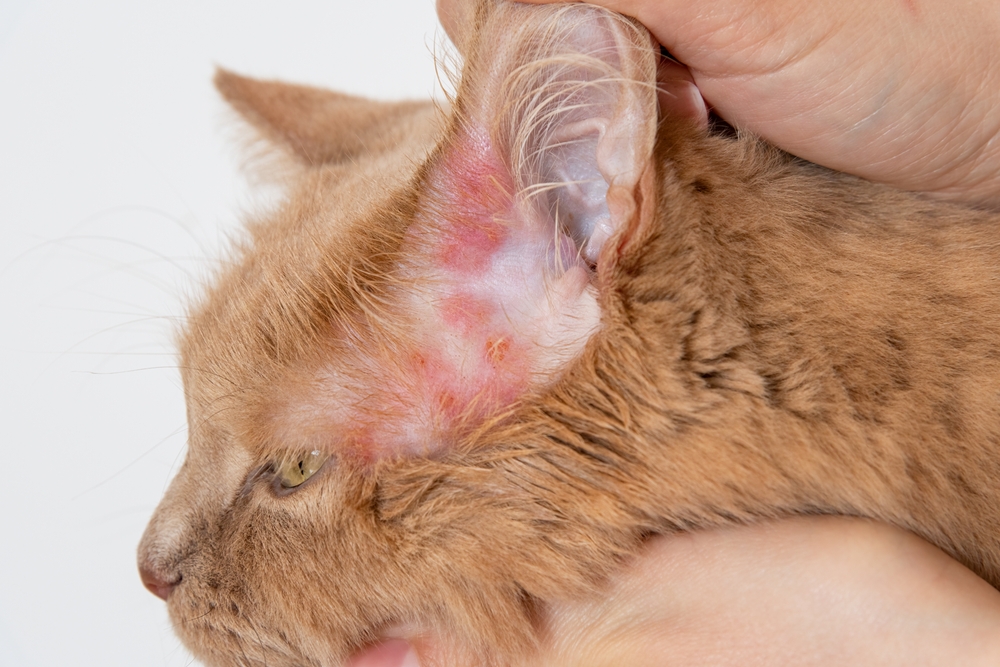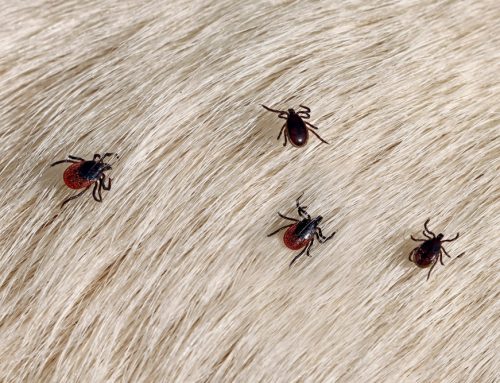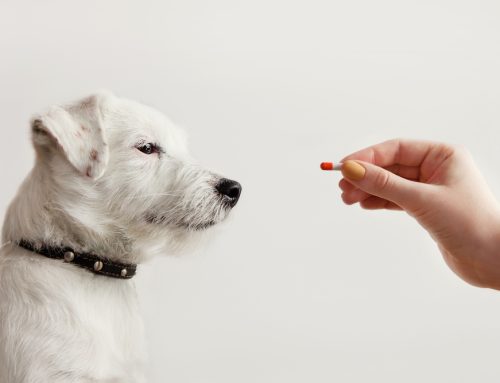In addition to dental disease and obesity, skin conditions are among the most common health issues affecting cats and dogs. By learning how to identify skin problems in your four-legged friend, you can save them from the discomfort and irritation myriad allergens, parasites, and pathogens cause. Our Best Friends Veterinary Care team outlines some of the most common skin conditions we see in pets every day.
Allergic skin disease in pets
Allergic skin disease encompasses a range of conditions triggered by sensitivity to various allergens. These allergens may include environmental factors, such as pollen and dust mites, fleas, certain foods, and contact allergens. Signs typically manifest as intense itching, scratching, redness, sores or scabs, hair loss, and potential secondary skin infections.
Skin infection in pets
Skin infection caused by yeast or bacteria often develops secondary to an underlying condition, such as an allergy or trauma and can lead to inflamed skin, pustules, crusting, and hair loss. Treatment typically involves antibiotics, antifungals, topical ointments or lotions, and medicated shampoos.
Ringworm in pets
Ringworm is a fungal infection that presents as circular patches of hair loss, redness, scaling, and sometimes itching. Topical and oral antifungal medications are used for treatment, along with environmental decontamination to prevent spread.
Mange in pets
Demodectic and sarcoptic mange lead to intense itching, hair loss, redness, and crusty skin. While sarcoptic mange can be transmitted between pets and people, demodectic mange is not contagious. Demodex mites naturally live on the skin, but when the immune system is weakened, the mites can overwhelm the body’s defenses and result in a mange infection. Treatment involves parasiticides, medicated shampoos, and antibiotics for secondary infections.
Seborrhea in pets
Seborrhea results from skin oil overproduction, leading to dry, flaky skin or excessive oiliness, which is accompanied by itching and redness. Medicated shampoos, topical treatments, and dietary supplements are commonly used for management.
Hot spots in pets
Hot spots, or acute moist dermatitis, are caused by self-trauma from licking, scratching, or chewing, often in response to skin irritation or allergy. The hair around these red, moist, painful lesions should be clipped, the area should be cleansed with an antiseptic solution, and topical or oral medications should be administered.
Alopecia in pets
Alopecia, or hair loss, is a common skin issue in pets that can be caused by myriad factors. Parasites, such as fleas and mites, environmental or food allergies, hormonal imbalances, such as hypothyroidism or Cushing’s disease, infections, such as bacterial or fungal dermatitis, autoimmune disorders, nutritional deficiencies, trauma, and genetic predispositions can lead to hair loss in pets. Treatment depends on the underlying cause and can vary widely.
Dry skin in pets
Pets’ dry skin can be caused by various factors, including environmental conditions such as low humidity, frequent bathing with harsh shampoos, nutritional deficiencies, and underlying medical conditions such as hypothyroidism or allergies. Providing proper hydration, using gentle, moisturizing shampoos during bathing, supplementing the diet with essential fatty acids, and ensuring a balanced diet can help alleviate a pet’s dry skin. Regular grooming and avoiding over bathing can also prevent further skin drying.
Lick granulomas in pets
Lick granulomas, also known as acral lick dermatitis, occur when a pet excessively licks or chews a specific area, leading to a raised ulcerated lesion. These lesions are often caused by underlying medical issues, stress, boredom, or anxiety. Treatment involves addressing the underlying cause, preventing further licking with bandages or cones, and possibly administering medications to reduce inflammation and itching.
Hormonal disorders in pets

Hormonal imbalances, such as hypothyroidism, Cushing’s disease, or diabetes, can manifest as skin problems in pets. Signs may include hair loss, thinning coat, dry or greasy skin, fragile skin, and recurrent infections. Treatment involves hormone replacement therapy or other medications to manage the underlying condition.
Understanding common skin conditions in cats and dogs is essential for proactive pet care. By recognizing symptoms early and seeking veterinary guidance, you can effectively manage your furry pal’s condition and keep them comfortable and healthy. If your pet has developed any skin or coat abnormality, schedule an appointment with our Best Friends Veterinary Care team.








Leave A Comment